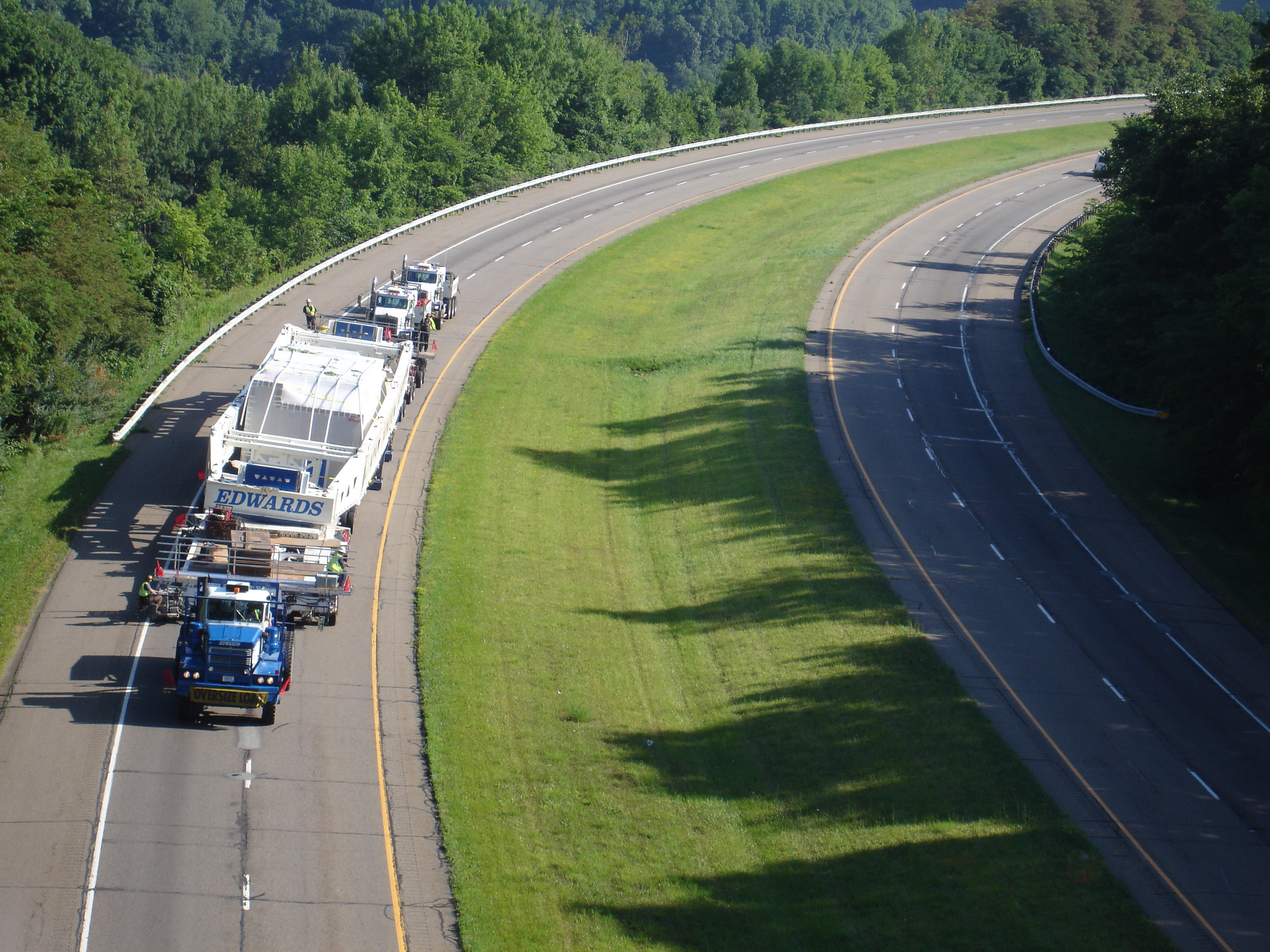
Most Southeast Ohio drivers have probably experienced the displeasure of driving disruptions caused by superloads. These gigantic vehicles haul oversized loads of goods on Ohio highways. To move these enormous shipments, the state highway patrol must evacuate the roads to make way. While some see the massive loads as an inconvenience, others acknowledge the delay as a sign of the state’s growing economy.
The Ohio Department of Transportation (ODOT) defines a “superload” as any vehicle or load that is either wider than 14 feet, taller than 14 feet 6 inches or has a gross vehicle weight greater than 120,000 pounds. Like semitractor-trailers, superloads haul a plethora of goods and materials ranging from oil and gas to manufactured products. According to ODOT, more than 63,000 superload permits alone were issued in 2014.
ODOT Public Information Officer Becky Giauque cites 2011 policy changes as one explanation for the increase in superload movement. That year, ODOT decreased the minimum vehicle requirements. This change permitted more vehicles to pass through Ohio, instead of routing around it.
Despite the highway closures and inevitable traffic that come with superload moves, Giauque says the department does not receive frequent complaints. “As far as people being stuck in traffic, I think that’s a small component of the big picture,” Giauque says. “In general, people are pretty tolerant and realize that these loads are moving Ohio’s economy forward.”
Coordinating a superload move is procedural: Haulers must submit a detailed application of their load, which ODOT then scrutinizes for traffic density, routing and safety to the public. Once the load passes inspection, ODOT determines the necessary equipment needed for safe passage and begins to lay out a timeline for the move. On the day of the move, traffic control must then communicate with State Highway Patrol, local utility companies as well as the hauler to move the colossal load safely through the region’s narrow highways.
Superload drivers face different challenges than those associated with conventional trucking. John Scarfo has been a truck driver for 30 years and has worked as a superload driver for Hill Crane for the last 20 of those years. Scarfo says his responsibilities include hauling cranes and making sure his load is secure and meets weight requirements. But unlike some superloads, Scarfo’s cargo does not require a highway shut down just a police escort to help maneuver the haul.
Scarfo says the most difficult aspects of driving a superload are navigating detours and maneuvering around sharp corners. He says that parts of Ohio are notorious for small roads and awkward angles. “I like the challenge of it. Being able to move something as big as you’re moving,” Scarfo says.
Superload driver Matt Peters echoes Scarfo’s love of the challenge, but says the biggest nuisance for him is staying on course with the oversized load. “Sometimes you might have 30 routes just across Ohio,” Peters says. “You have to take time and study your route.”
Drivers certainly do “take time” to pass through the routes. According to Peters, superload drivers are only permitted to drive about 50 mph, limiting trips to a snail’s pace.
Despite the hassle and headache of transporting over half a ton of materials, both drivers say the most rewarding part of the job is getting from point A to point B.
“I like it a lot,” Scarfo says. “I’ve been going a long time and I really do like it.”
